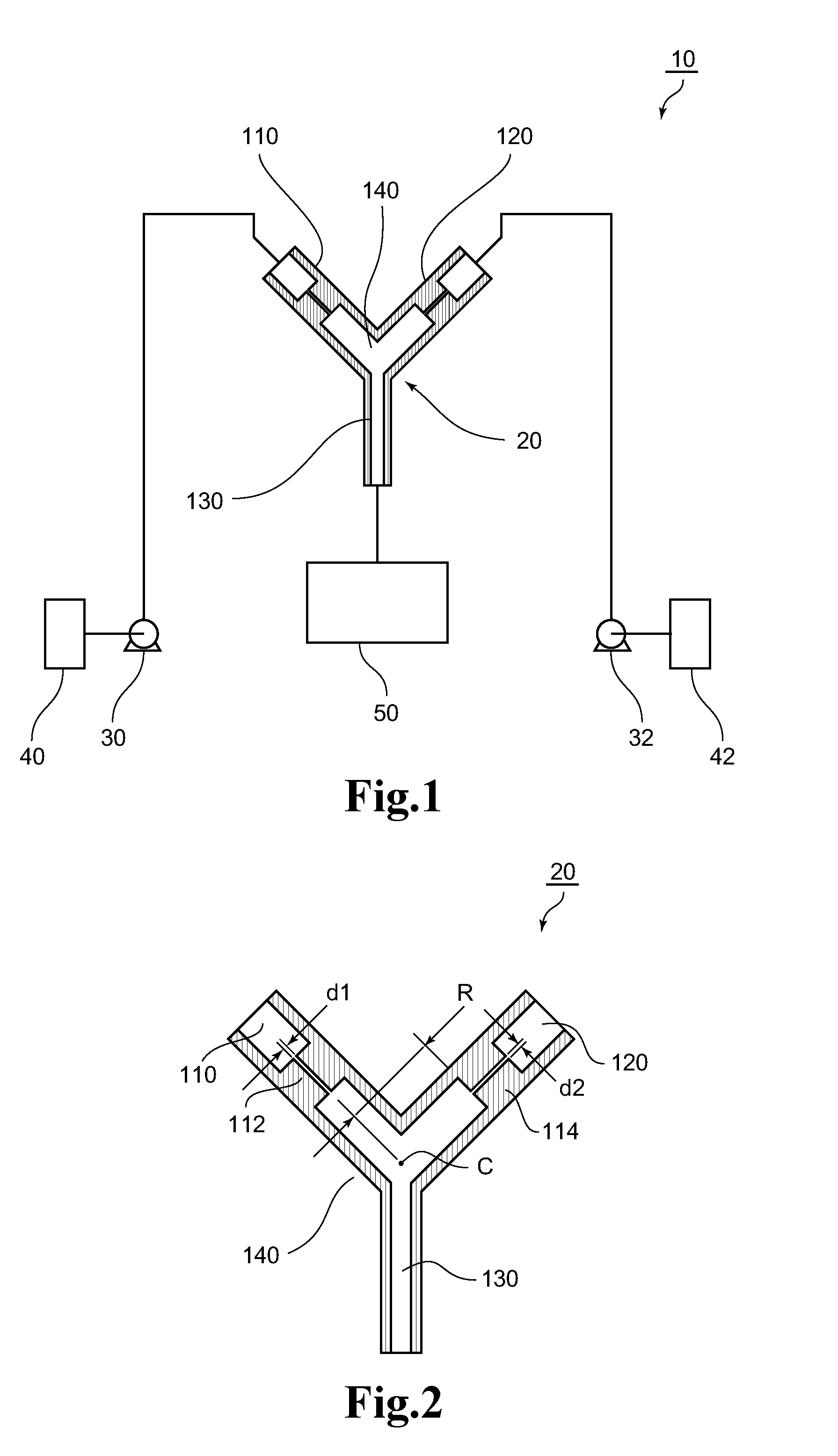Hydrophobized spherical polyalkylsilsesquioxane fine particle, external additive for toner, dry toner for electrophotography, and method of manufacturing hydrophobized spherical polyalkylsilsesquioxane fine particle
- Summary
- Abstract
- Description
- Claims
- Application Information
AI Technical Summary
Benefits of technology
Problems solved by technology
Method used
Image
Examples
example 1-1
First Step
[0136]A 200 ml recovery flask was loaded with 54.0 g of water and 0.01 g of acetic acid serving as a catalyst, and the mixture was stirred at 30° C. 68.0 g of methyltrimethoxysilane was added thereto, and the mixture was stirred for 1 hour to provide 122.0 g of a raw material solution. In this case, the amount of methanol generated by the hydrolysis reaction of methyltrimethoxysilane is 48.1 g. The alcohol amount is a theoretically calculated value on the assumption of 100% hydrolysis, and the same applies to each of the following Examples and Comparative Examples.
Second Step
[0137]A 1,000 ml recovery flask was loaded with 2.8 g of 25% ammonia water, 128.0 g of water, and 383.0 g of methanol, and the mixture was stirred at 30° C. to prepare an alkaline aqueous medium. To the alkaline aqueous medium, 122.0 g of the raw material solution obtained in the first step was dropped over 1 minute. The mixed liquid after the dropping of the raw material solution was directly stirred ...
example 1-2
[0140]The first step to the fourth step were performed in the same manner as in Example 1-1 except that the amount of methyltrimethoxysilane to be used in the first step was changed to 136.0 g. Thus, dry powder of hydrophobized spherical polymethylsilsesquioxane fine particles was obtained. In this case, the amount of methanol generated by the hydrolysis reaction of methyltrimethoxysilane is 96.1 g.
[0141]The fine particle amount (solid content concentration) in the dispersion liquid containing spherical polymethylsilsesquioxane fine particles obtained in the third step was 1.4 mass %.
example 1-3
[0142]The first step to the fourth step were performed in the same manner as in Example 1-1 except that the amount of methyltrimethoxysilane to be used in the first step was changed to 34.0 g. Thus, dry powder of hydrophobized spherical polymethylsilsesquioxane fine particles was obtained. In this case, the amount of methanol generated by the hydrolysis reaction of methyltrimethoxysilane is 24.0 g.
[0143]The fine particle amount (solid content concentration) in the dispersion liquid containing spherical polymethylsilsesquioxane fine particles obtained in the third step was 0.7 mass %.
PUM
| Property | Measurement | Unit |
|---|---|---|
| Fraction | aaaaa | aaaaa |
| Fraction | aaaaa | aaaaa |
| Force | aaaaa | aaaaa |
Abstract
Description
Claims
Application Information
 Login to view more
Login to view more - R&D Engineer
- R&D Manager
- IP Professional
- Industry Leading Data Capabilities
- Powerful AI technology
- Patent DNA Extraction
Browse by: Latest US Patents, China's latest patents, Technical Efficacy Thesaurus, Application Domain, Technology Topic.
© 2024 PatSnap. All rights reserved.Legal|Privacy policy|Modern Slavery Act Transparency Statement|Sitemap

